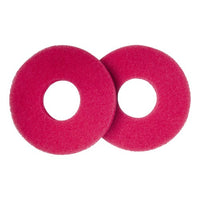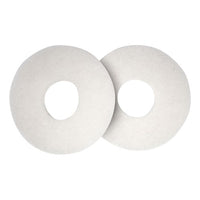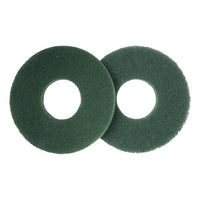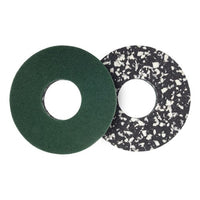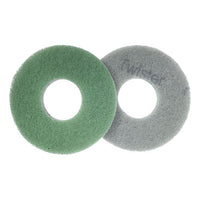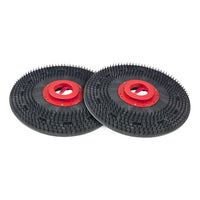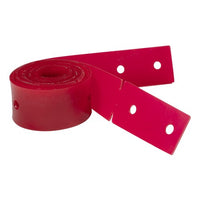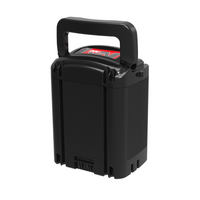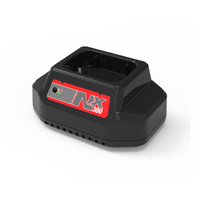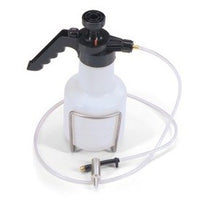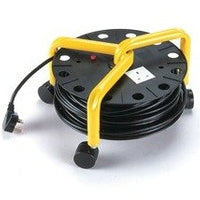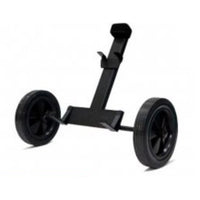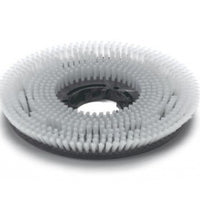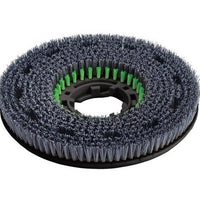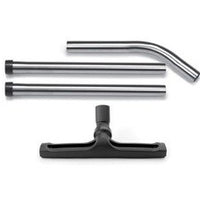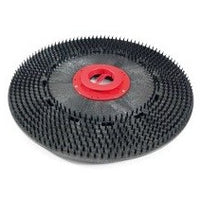Collection: Cleaning Machine Parts
Comprehensive range of cleaning machine parts and accessories for professional equipment maintenance. From replacement brushes and squeegees to filters and drive boards, our selection ensures continuous operation, optimal performance, and extended equipment life across all major cleaning machine brands.
Cleaning Machine Parts Product information
At ClickCleaning, we recognise that even the most reliable cleaning machines require regular parts replacement to maintain peak performance. Our comprehensive parts and accessories range ensures your equipment continues delivering professional results whilst maximising return on investment through extended service life.
The difference between a cleaning machine lasting three years or ten often comes down to timely parts replacement and proper maintenance. Worn brushes reduce cleaning effectiveness long before complete failure, damaged squeegees leave streaks that undermine professional appearance, and clogged filters strain motors leading to premature failure. Our parts range addresses these critical wear points, keeping your cleaning equipment operating at maximum efficiency.
Brushes and pad drivers represent the primary wear components across most floor cleaning equipment. Our range includes replacement brushes for scrubber dryers in all standard sizes, from compact 35cm units through to large 90cm ride-on machines. We stock various bristle types including soft brushes for delicate surfaces, medium-stiffness for general cleaning, aggressive brushes for heavy soiling, and specialist brushes for safety flooring. Pad drivers accept standard floor pads, with quick-release mechanisms enabling rapid pad changes between different cleaning tasks.
Squeegee blades directly impact water recovery performance in scrubber dryers and wet vacuums. Our replacement squeegees include front and rear blades in various durometers to suit different floor types and conditions. Premium polyurethane blades offer extended life and chemical resistance, whilst economical rubber options provide reliable performance for standard applications. We supply both complete squeegee assemblies and individual blades, enabling cost-effective maintenance that prevents streaking and ensures thorough water recovery.
Filtration components protect expensive motors whilst maintaining suction performance. Our filter range encompasses everything from simple foam pre-filters through to HEPA cartridges for superior air quality. Vacuum cleaner bags in various capacities suit different machine types, with both genuine manufacturer options and quality-compatible alternatives. Regular filter replacement prevents the reduced performance and motor damage caused by restricted airflow.
Electrical components including cables, plugs, and switches address common failure points that would otherwise render machines unusable. We stock replacement power cables in various lengths, heavy-duty plugs suitable for commercial use, and safety switches that restore proper operation. Carbon brushes for motors represent crucial wear items - timely replacement prevents expensive motor damage whilst maintaining consistent performance.
Hoses and accessories expand machine capability whilst replacing damaged components. Our vacuum hose range includes various diameters and lengths, with options for wet/dry use, chemical resistance, and anti-static properties. Floor tools, crevice tools, upholstery attachments, and specialist accessories enable machines to tackle diverse cleaning challenges effectively.
Wear parts for specific machine types address unique maintenance requirements. Rotary machine drive boards transmit power to brushes and pads, requiring periodic replacement as lugs wear. Carpet cleaner spray jets block over time, reducing cleaning effectiveness until replaced. Air mover motors and bearings have finite service lives requiring eventual replacement to maintain performance.
Genuine versus compatible parts presents important considerations. Genuine manufacturer parts ensure perfect fit and maintain warranty coverage but command premium prices. Quality compatible alternatives offer significant savings whilst delivering reliable performance for many applications. We clearly identify part types, enabling informed decisions based on your specific requirements and budget constraints.
Chemical feed systems require various replacement components to maintain accurate dosing. Pumps, valves, and tubing wear through chemical exposure, potentially causing wastage or ineffective cleaning. Our replacement parts restore proper chemical delivery, optimising cleaning performance whilst controlling costs.
Batteries and chargers power cordless and ride-on equipment, representing significant replacement expenses. We supply various battery types from traditional lead-acid through to modern lithium options, along with compatible chargers. Proper battery selection and maintenance dramatically impacts operational costs and equipment availability.
Whether maintaining a single machine or managing extensive cleaning fleets, our parts and accessories range ensures equipment continues performing professionally. Our experienced team assists with part identification, compatibility verification, and maintenance advice that maximises equipment investments whilst minimising downtime.
Cleaning Machine Parts FAQs
How do I identify the correct replacement parts for my machine?
Accurate part identification starts with recording your machine's make, model, and serial number - usually found on
identification plates near the motor or handle base. This information enables precise part matching, ensuring compatibility and proper fit. Many parts appear similar but have crucial differences affecting performance.
Original part numbers provide the most reliable identification method. Check worn parts for embossed numbers, consult machine manuals, or contact us with machine details for assistance. Photos of worn parts help our team identify replacements when numbers aren't visible.
For common wear items like brushes and squeegees, measuring dimensions often suffices. Brush diameter, mounting hole
configuration, and bristle type determine compatibility. Squeegee length and mounting system vary between manufacturers. When uncertain, we verify compatibility before dispatch.
When should I replace brushes and pads?
Brush replacement timing depends on usage intensity and floor types, but visual inspection provides clear indicators. When bristles wear to 50% of original length or show uneven wear patterns, cleaning effectiveness diminishes significantly. Continuing use risks floor damage and poor results.
Pad replacement frequency varies by type and application. Aggressive stripping pads might last just one major job, whilst maintenance pads endure weeks of daily use. Replace pads when they compress, lose texture, or show obvious wear. Rotating pads between uses extends life.
Usage hours provide general guidance - expect 300-500 hours from quality brushes under normal conditions, less in aggressive applications. Document replacement intervals to predict future needs and budget accordingly. Premature wear often indicates incorrect pressure settings or unsuitable brush selection.
Are compatible parts as good as genuine ones?
Quality compatible parts offer excellent value for many applications, delivering 80-90% of genuine part life at 50-70% of the cost. Reputable manufacturers use similar materials and specifications, ensuring reliable performance for routine maintenance.
However, critical components like control boards or safety switches merit genuine parts to ensure reliability. Warranty considerations also apply - using non-genuine parts may invalidate manufacturer warranties. We clearly identify part origins and advise on suitability for specific applications.
For consumables like bags, filters, and brushes, compatible options prove economical without compromising performance. Many facilities use genuine parts for critical repairs and compatibles for routine maintenance, balancing cost and reliability effectively.
How often should I replace squeegee blades?
Squeegee replacement intervals depend on usage intensity, floor types, and cleaning chemicals. Daily use typically requires replacement every 3-6 months, whilst occasional use might extend to 12 months. However, performance degradation provides better indicators than time alone.
Watch for streaking, incomplete water pickup, or visible blade damage like nicks and tears. Even minor damage creates streaks undermining professional appearance. Most squeegees offer four usable edges - rotating blades when wear appears quadruples lifespan.
Harsh chemicals and abrasive floors accelerate wear significantly. Premium polyurethane blades last 2-3 times longer than standard rubber in challenging conditions, often justifying higher initial cost. Document replacement frequency to optimise purchasing decisions.
What filters do I need to stock?
Filter inventory depends on equipment types and usage patterns. Pre-motor filters protecting vacuum motors require most frequent replacement - stock 3-6 months supply. HEPA filters last longer but cost more, suggesting 2-3 units inventory for critical machines.
Foam filters for wet/dry vacuums need regular cleaning but eventual replacement. Stock 1-2 sets per machine, enabling rotation during cleaning/drying. Cartridge filters for dry vacuuming require replacement when cleaning no longer restores suction.
Consider usage environment - dusty conditions demand increased filter inventory. Healthcare facilities using HEPA filtration need assured supply continuity. Calculate monthly consumption and maintain appropriate reserves without excessive stockholding that ties up capital unnecessarily.
How do I maintain spare parts inventory?
Effective parts management balances availability against capital investment. Critical wear items like brushes, squeegees, and filters deserve priority stocking based on replacement frequency. Track usage patterns to predict needs accurately.
Fast-moving consumables justify bulk purchasing for volume discounts. Brushes, pads, and bags used regularly provide savings opportunities. Slower-moving electrical components might warrant single-unit stockholding or supplier-held inventory for next-day delivery.
Organise storage systematically - label clearly, rotate stock using first-in-first-out principles, and protect items from damage. Digital inventory tracking helps identify reorder points and consumption trends. Regular audits ensure accuracy whilst identifying obsolete stock from retired equipment.
Can I rebuild motors instead of replacing them?
Motor rebuilding offers economical alternatives to replacement for expensive motors. Professional rebuilding services replace bearings, brushes, and worn components at 50-70% of new motor cost. This particularly suits large scrubber dryer or ride-on machine motors where replacement costs are substantial.
However, smaller vacuum motors often cost less to replace than rebuild. Labour costs for diagnosis, disassembly, and
rebuilding exceed new motor prices. Additionally, rebuilt motors may have shorter remaining life than new units.
Consider equipment age and overall condition when deciding. Rebuilding motors in otherwise worn equipment rarely proves economical. Conversely, maintaining expensive equipment in good condition justifies motor rebuilding investment.
What causes premature brush wear?
Excessive pressure remains the primary cause, with operators believing "harder equals cleaner" when proper chemical
action and appropriate brush selection matter more. Incorrect pressure causes rapid wear whilst potentially damaging floors.
Wrong brush selection accelerates wear significantly. Using soft brushes on rough surfaces causes rapid deterioration, whilst aggressive brushes on smooth floors wear unnecessarily. Match brush stiffness to floor type and soil conditions for optimal life.
Debris accumulation in brushes creates uneven wear patterns and reduced effectiveness. Regular cleaning removes tangled materials that cause eccentric rotation and premature wear. Chemical damage from incorrect products or excessive concentrations also shortens brush life.
How do I know when to replace my machine versus repairing it?
The 50% rule provides general guidance - when repair costs exceed 50% of replacement value, replacement usually proves economical. However, consider equipment age, overall condition, and technological advancement when deciding.
Frequent breakdowns indicate replacement time regardless of individual repair costs. Downtime, lost productivity, and repair expenses accumulate quickly. Modern machines often deliver improved efficiency that justifies replacement through operational savings.
Parts availability influences decisions significantly. Obsolete models with scarce, expensive parts become uneconomical to maintain. Conversely, current models with ready parts availability and local service support warrant continued maintenance investment.
Are upgraded parts worth considering?
Upgraded components can dramatically improve machine performance and reliability. Premium squeegees lasting twice as long as standard versions justify modest premiums through reduced replacement frequency and consistent performance.
LED light upgrades for machines operating in dim areas improve safety and cleaning quality. Variable speed motor controllers add functionality to single-speed machines. Upgraded filtration enhances air quality whilst protecting motors more effectively.
Evaluate upgrades based on operational benefits versus cost. Upgrades addressing specific problems or limitations often prove worthwhile. However, extensive upgrading of old equipment rarely matches new machine capabilities cost-effectively. Consider upgrades for good-condition equipment with specific improvement needs.


